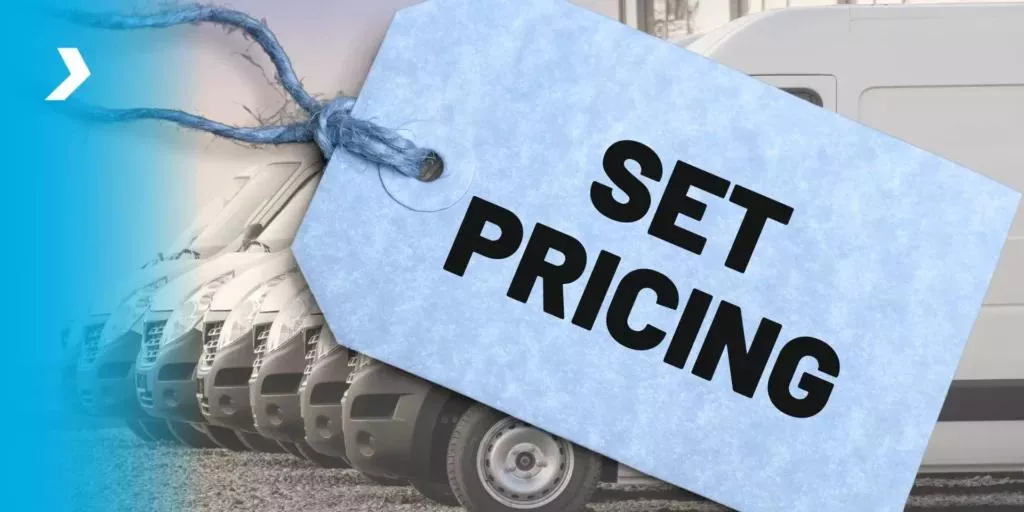Set pricing in Expedited Freight Shipping: What are the benefits?

The struggle between maintaining low transportation costs and ensuring dependable carrier capacity is as old as the logistics industry. Brokers continually grapple with the dual challenge of minimizing transportation costs without compromising speed, service, and carrier capacity. Maybe the best possible solution to this challenge is adopting fixed pricing strategies, offering the perfect balance between stability and ever-rising transportation expenses. While this solution demands a significant amount of foresight and analysis from both the brokers and carriers involved and the implementation of technological advancements, it can benefit all parties in the long run.
What Is Set Pricing in Expedited Freight Shipping?
Set pricing, or fixed rates, refers to a long-term pricing strategy specifically tailored for small truckload cargo within the expedited shipping sector. It's characterized by stable, predetermined prices for truckload freight, often referred to as primary, bid, or dedicated rates. These prices are typically established during an annual bidding process or a Request for Proposal (RFP), where businesses forecast their shipping needs and present them to transportation providers. This process facilitates the alignment of expectations and resources, paving the way for a more predictable freight shipping experience.
Why Do Brokers & Carriers Use Set Pricing?
The fragmented U.S. truckload market is a theater of constant fluctuation in pricing and capacity. In this volatile environment, brokers and carriers turn to set pricing as a beacon of predictability. This strategy addresses the twin challenges of securing stable rates and capacity amidst the competing agendas of countless market participants.
Why brokers favor fixed rates:
- Easier budgeting and forecasting
- More reliable capacity
- Enhanced ability to build strategic career relationships
- Greater provider accountability through KPI tracking
Why carriers prefer fixed rates:
- Predictable revenue streams
- More consistent and efficient driver scheduling
- Improved driver satisfaction
As you may see, set pricing introduces much-needed predictability for both parties in the tumultuous freight market.
What's the Difference Between Set Pricing and Spot Rates?
While committed rates are invaluable, no broker relies solely on them. Instead, a strategic mix of contract and spot rates is often employed. The latter is short-term, transactional freight prices that mirror the immediate supply and demand dynamics in the truckload market.
Contract vs. Spot Comparison:
Reasons Why Brokers Might Opt for Spot Rates:
- The inability of primary and backup carriers to cover a shipment.
- Urgent, unforeseen shipping requirements.
- Insufficient freight density or consistency for contract pricing.
Going Beyond Cost per Load or Why to Choose Contract Rates
The key benefits of contract pricing are stability and predictability — for both rates and capacity, for both shippers and carriers. It's all about taking a long-term view of supply chain strategy instead of trying to get the cheapest rate on an individual shipment.
How Much Freight Volume Do You Need to Get Set Pricing with Expedite All?
In short, any broker can host a bid. Engaging in transportation RFP is not exclusive to large enterprises moving extensive volumes daily. Smaller shippers also partake in bids to secure committed pricing. Essentially, any broker can initiate a bid and benefit from the stability and predictability of committed pricing. It is a versatile tool for businesses of various scales to negotiate stable rates.
How Often Do Brokers Renew Set Pricing?
Most brokers organize at least one procurement event each year, a proactive measure designed to secure contracted capacity for their primary freight needs. Given the volatile nature of the truckload freight market, known for its susceptibility to fluctuations driven by economic factors, seasonal demands, and industry trends, it's uncommon to find pricing contracts extending beyond one year.
The timing of annual bids is strategic, most occurring between the fourth quarter (Q4) and the first quarter (Q1) of the fiscal year. This period is chosen for its proximity to the end and start of the year, providing a natural juncture for reflection on past performance and planning for the future, typically including LTL and intermodal in addition to truckload.
Predictable Pricing, More Flexibility
Set rates aren't rigidly fixed for a year. The dynamic nature of networks means opportunities can be seasonal or temporary, leading shippers to explore pricing tools that offer predictable rates yet retain flexibility. Along with the annual type of contract freight pricing, you have two more options to go with:
- Quarterly bids allow shippers to get new rates from their providers every few months instead of having a fixed rate on file for an entire year.
- Mini-bids, which can occur as frequently as every month, are more dynamic and responsive to current market conditions. They provide carriers with competitive rates while simultaneously offering shippers reliable capacity.
What About the Cost of Fuel?
Fuel, accounting for approximately 30% of a carrier's operational costs, presents a significant variable. Its price volatility necessitates a flexible component in fixed-rate agreements: the fuel surcharge (FSC). Determined by a matrix or schedule, the FSC adjusts according to a pre-established matrix correlating to diesel prices, ensuring sustainable, long-term pricing.
Become a Freight Rate Master
If you’re ready to see if your freight qualifies for set pricing, talk to one of our dedicated specialists today. We'll work with you to provide the best solution for your shipments.


